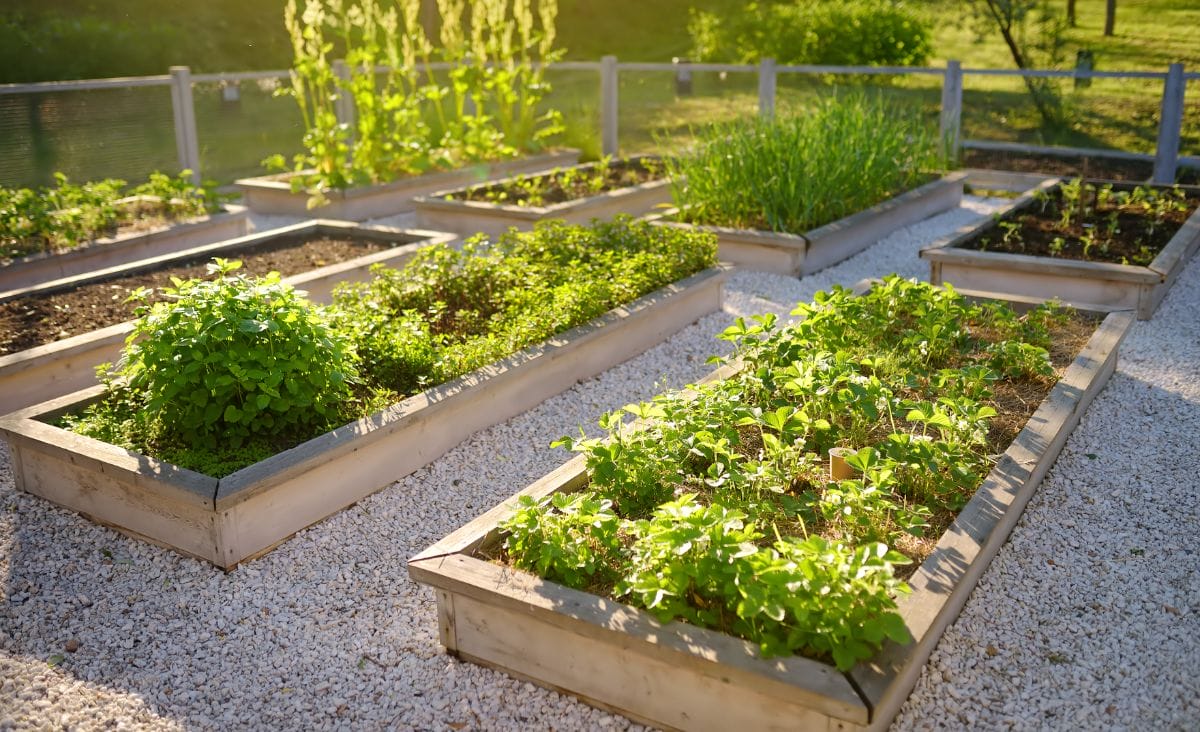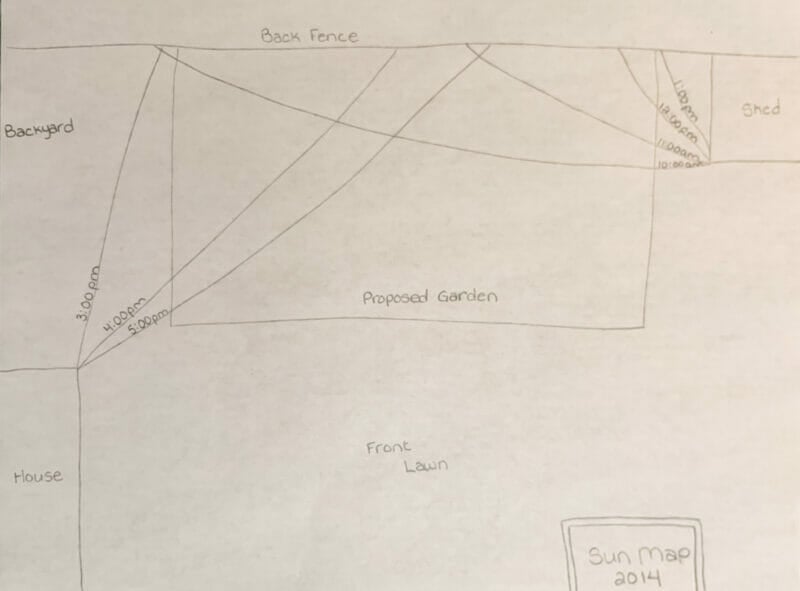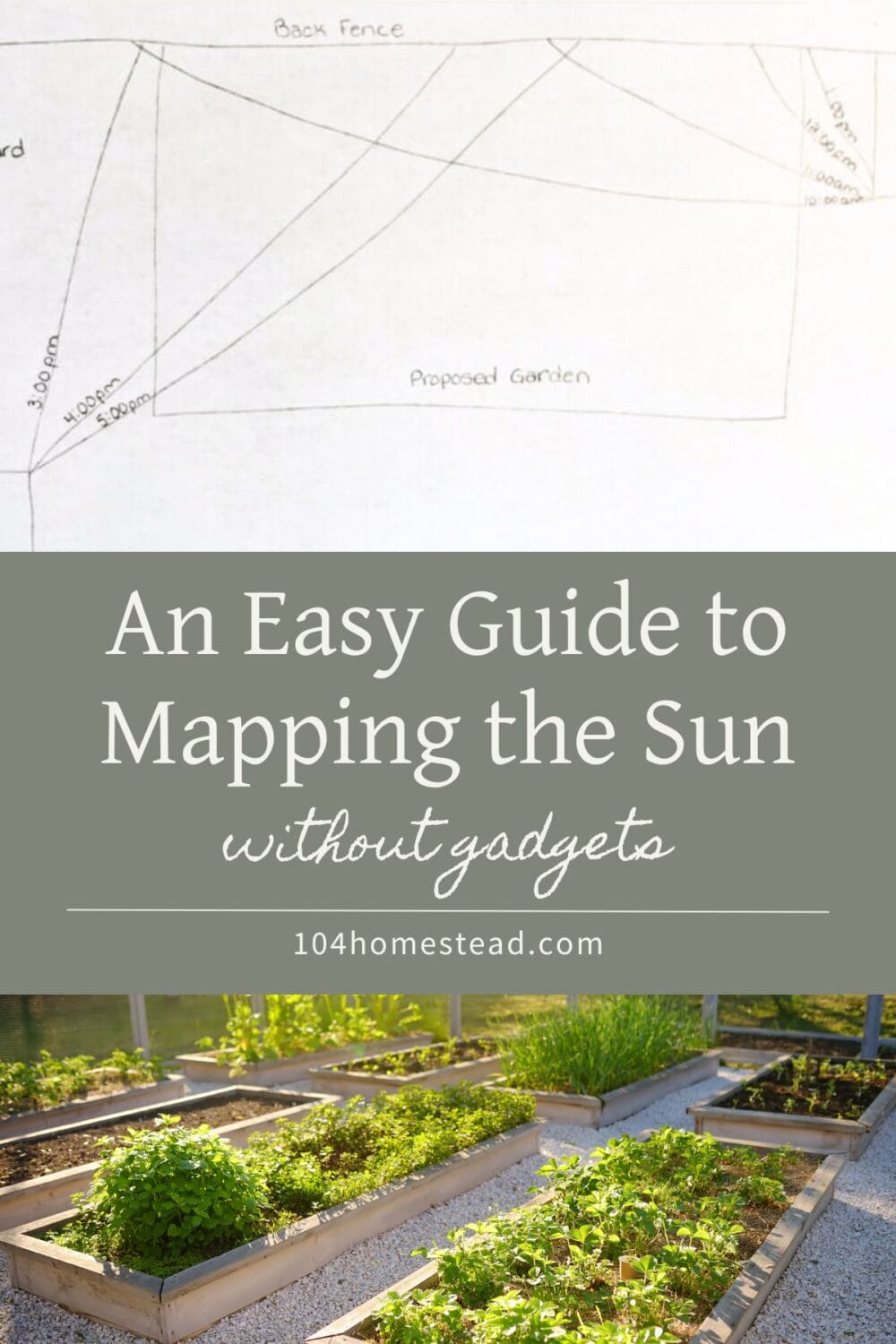Sun Map 101: An Easy Guide to Mapping the Sun Without Gadgets
Discover your garden’s sunlight exposure without any fancy gadgets by making a sun map on paper so your plants get their moment(s) in the sun.

So you’ve decided to start a new garden. Before you stick that shovel in the ground, you need to know how much light the area gets. This is done by creating a sun map. A sun map is essentially a visual representation of the solar exposure across your property. It shows areas that receive the most sunlight versus those that are more shaded throughout the day. This tool aids in strategic planning for gardening.
Each plant has different requirements that can be found on the seed packet or plant tag. Your sun map will help you decide the best place to plant these plants.
What the Sun Recommendations Mean
You want to ensure you’re putting the right plant(s) in the right spot. Sometimes plant tags won’t say specific hours of sunlight, but here is a general guide:
- Full Sun: 6+ hours
- Partial Sun/Partial Shade: 3-6 hours
- Dappled Sun: 3-4 hours of inconsistent light
- Full Shade: Less than 3 hours
If you find that some portions are fairly shady, no worries! There are plenty of edibles that thrive in these low-light areas.
Most garden centers and box stores offer kits for calculating sun exposure. They cost about $18 and work easily. Just place it in the proposed garden area, turn it on, and return 24 hours later to read the results. This is one option, but there is another option…
How to Map Sun Without Tools
If you’ve got a day off, grab a lawn chair, some margarita mix, and a good book and set up right where you intend to put your garden. Have a notebook and some pencils handy and when the sun starts shining on you, jot down the time. When the sun is no longer shining on you, jot down the time. From there, you can calculate the hours. You may want to spend a weekend doing this to compare results.
Okay, I was totally kidding (well… maybe not TOTALLY, since that would work for creating a sun map). For those of us who haven’t got the luxury of lounging around in the yard for a day, you can still calculate your sun.
Get in touch with your inner artist.
First, you want to create your sun map during the time of year you plan to plant your garden. The sun’s path, angle, and overall sun’s position change seasonally.
Draw a crude map of your proposed garden as well as any tall structures around it. These tall structures include trees, buildings, or anything else that may cast a dark shadow.
Pick a nice day to do your sun map. Cloudy days can make it difficult to identify shady spots.
Start early in the morning when the sun approaches the proposed garden area. This may mean starting your day right at sunrise. Every hour draw a rough line where the sun is shining or shadows are cast with a note as to the time. Make sure you mark where structures like a neighboring chicken coop are casting shadows.
Repeat this every hour until the sun is past the area. This may mean checking in until sunset. When you are finished, you will have something that resembles a topographical map, but it maps the sun on your property.

Your map will show you when each area started getting the sun, when it finished getting the sun, and any breaks in between.
What the Results Mean for Your Garden Plans
Based on my sun map, I know that my corners don’t get as much sun as I’d hoped. The shed and the house cast shadows. The back right corner doesn’t get the sun until 1:00 p.m. The back left corner starts getting shaded around 3/4:00. When planning my vegetable garden, I may want to put some more part-sun or shade-tolerant vegetables in those areas. The front of the garden gets plenty of sunlight so that it might be ideal for my fruiting vegetables.
Frequently Asked Questions
Additional Reading
Need more help figuring out how to design your gardens? Check out these great books.
- Shade Garden Solutions: Eight Essential Problems Solved for Successful Shade Gardening by Gene Bush offers useful tips and new ideas for gardening in areas with a lot of shade. It is full of great ideas, from picking out the right plants to design tips, so anyone who wants to turn shady areas into lush, colorful gardens should read it.
- Garden Anywhere by Alys Fowler is a fun book that shows people how to grow beautiful gardens in even the strangest places. Its useful advice, eco-friendly gardening methods, and Alys’s contagious enthusiasm make it a fantastic read for anyone who wants to make a green oasis, no matter where they live or how much gardening experience they have.
- A Seed Needs Sun (a fun book for young children) by Kate Riggs introduces the basics of plant growth in a fun and beautifully illustrated way. This book shows how a seed grows into a plant, emphasizing how important it is to give plants sunlight and care. It is a great way to get kids interested in gardening and nature’s beauty.
If you’ve found value in this blog post and enjoyed reading it, why not share it with your Pinterest community? Pin the image below and spread the love!

Creating a sun map is a simple yet powerful tool to ensure your garden thrives by understanding and utilizing the natural light patterns of your property. Remember, gardening is as much about enjoying the process as it is about the results.
What’s your favorite part of planning your garden, or do you have any tips for fellow gardeners on mapping their garden’s sunlight?

I just posted a video on YouTube to show how to determine exactly how many sunlight hours a particular spot can get in a shady backyard. Here is the link:
https://www.youtube.com/watch?v=T-rOT3rol58
It is easy to do and quite accurate.
Thank you.
Just by chance seeing your site. Also looked your youtube video. Interesting!
As a matter of fact, you can use 180 degree fisheye lens to take a photo, and you can calculate the sun shining length for any day. At a point many years ago, I thought to develop software to do that. But considered the big effort and few users, I just let it passed.
There is an Android app called Sun And Shade Analyzer which does *exactly* what you want. Quick link: https://bit.ly/SA_SHA
do you have to mark the cardinal points on your sun-mapping chart?
I don’t, but you might find it helpful if you have a large lot.
I agree with sun mapping but it is also very seasonal so you would need one made for every month if the year at least.
Time consuming but overall a helpful tool for gardeners
Yes, you definitely need to consider the seasons as winter light is much lower than summer light (plus, there are no leaves on the trees). Even start to finish of the growing season has different lighting.
There is now a more modern solution to this problem: An Android app called “Sun and Shade Analyzer” allows you to go to any place in your garden, scan your surroundings, and immediately get the average hours of direct sunlight that place will get.
I need to re-evaluate the sunlight in my garden this year. The trees on the edge of property have grown and are shading the garden differently now.
That is a great point Rachel! Sun maps are not just for new gardens. They should be used from time to time with established gardens as well. New structures and (as you mentioned) tree growth will alter shade patterns.
Hi, I’m 13 and still in school. How can I create a sun map if I don’t have the money or time?
I am heading out to my garden in the morning with my lawn chair. I will tell my family that I am researching how much sun our garden is getting!
All jokes aside, this is a great idea for a new garden spot. Who really knows how much sun a particular area gets?
Nice writeup! In designing a new system, I also always do other sector analyses in addition to sun – like water, wind, views, wildlife, etc. And a Zone analysis that helps me decide what to plant where.
Solar sector analysis is definitely one of the biggies though!
What an over achiever. It’s fabulous. I prefer the lawn chair approach. If my feet are getting damp, I make note of moisture issues. If my book pages are blowing, I make note of wind issues. K.I.S.S.
If you drink enough tequila, you can observe what it would be like to have two trees planted in that spot where you normally see one.
That’s where the hammock goes. 🙂
😀
I really need to do this with our yard at the new house. We have lots of shade. I’m surprised they don’t have an app for this too! (well, I didn’t really check) Amusing how people need to purchase a kit to notice where the sun is.
For just $6.49 you can get an app that “predicts Sun & Moon positions with a 3D Compass, Interactive Map, Augmented Reality and a Details Ephemeris.” Why would anyone need that? LOL
Of course!! LOL
For just $4.99 you can get an Android app which will give your the averge hoiurs of sunlight, taking into consideration anything that creates shade! That’s what you are looking for! The sun’s position is just a start, you have to average how may hours you will get, on a daily and seasonal basis, after subtracting out shade cast by buildings, trees, etc. Search for “Sun And Shade Analyzer”.